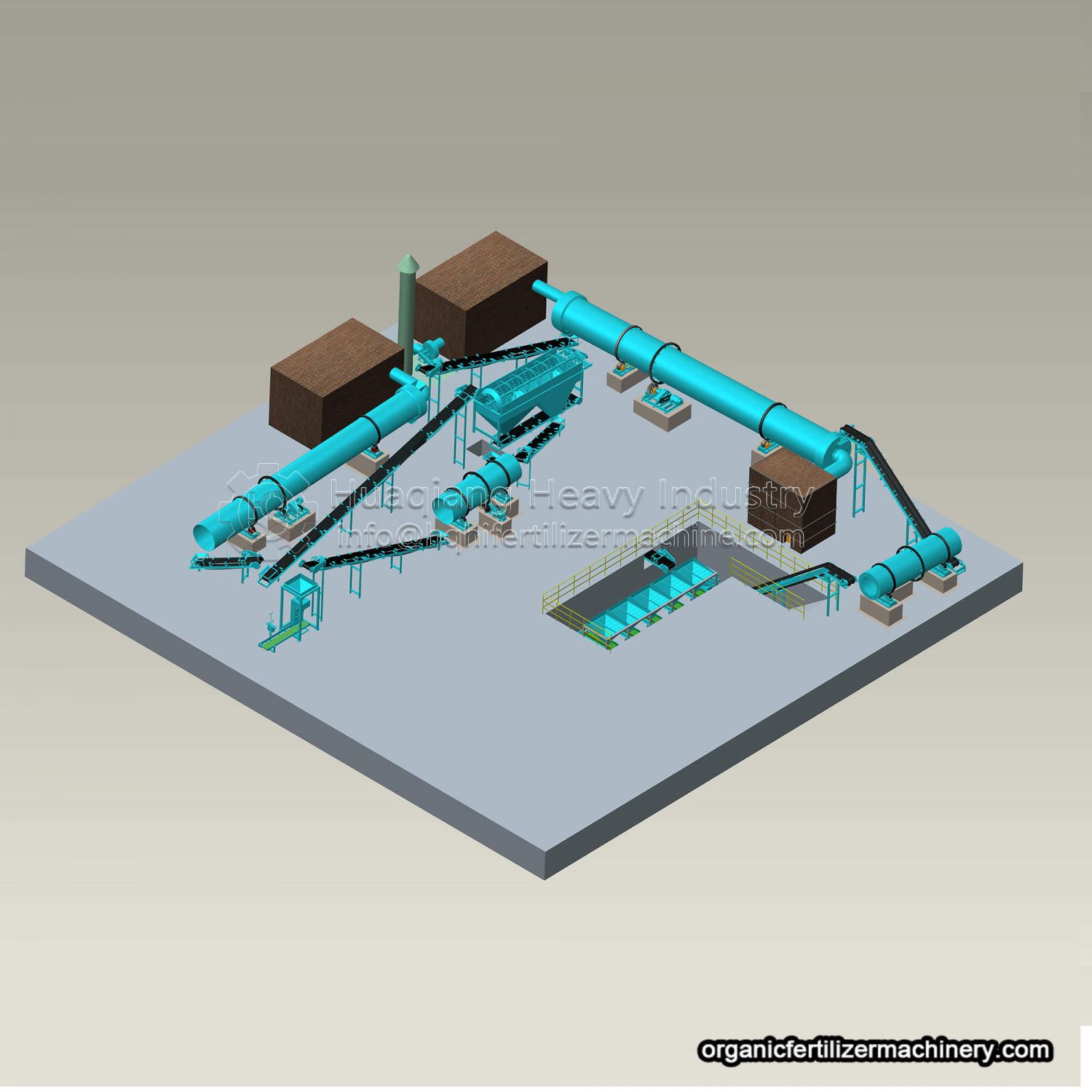Technological process and equipment configuration for processing organic fertilizer
In the pig manure fertilizer production line, there are two steps to process commercial organic fertilizer: the early fermentation and treatment part and the deep processing granulation part. Pig manure organic fertilizer granule production line is mainly equipped with the following equipment: compost turning machine, crusher, batching machine, mixer, fertilizer granulator, dryer, cooler, screening machine, coating machine, automatic packer. The general production steps are as follows: raw material fermentation, raw material mixing, raw material granulation, particle drying, particle cooling, particle grading, finished product coating and finished product packaging.

1. The first step is to ferment pig manure and other raw materials. The whole fermentation process can kill the harmful bacteria in it. Killing the bacteria is also a crucial step in the whole process of organic fertilizer production line.
Secondly, we should use the semi wet material crusher to decompose the raw materials.
3. Matching raw materials is one of the most important processes in organic manure production. Its main purpose is to add appropriate amount of auxiliary materials according to a certain proportion to improve the quality of fertilizer.
4. The prepared materials should be sent to the fertilizer granulator for granulation after being evenly mixed, which is also an important aspect of the whole fertilizer production line.
5. After the drying process, the raw materials can obtain high temperature energy. The next step is to cool them at low temperature. Since water can not be used for cooling, it is necessary to separate the contact between materials and water through the cooler equipment.
6. Screening is to screen out the unqualified fertilizer particles. The screening fertilizer production machine here has the advantages of simple operation.
7. Coating the qualified products to increase the brightness and roundness of the particles.
8. Finished product packaging: the coated particles, that is, the finished product, are bagged and stored in a ventilated place.
.jpg)





 So far, almost 80% of
So far, almost 80% of 